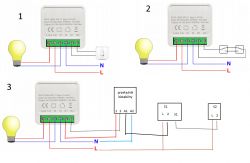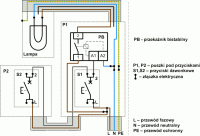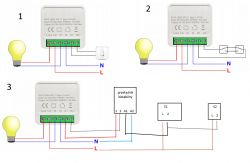Hello
I say up front that I haven't had much to do with home automation.
To the point. I wanted to install a relay for lighting with google home control. The diagram of the relay I found looks like this. 1 and 2 are two different suggested ways to connect it. However, I would like to connect it using a bistable relay and two monostable switches. This resulted in a diagram marked 3. Hence my question. Is this connection correct and will it then be possible to switch the light on and off independently both via google home and with one of the two switches placed in the wall? .
.
I say up front that I haven't had much to do with home automation.
To the point. I wanted to install a relay for lighting with google home control. The diagram of the relay I found looks like this. 1 and 2 are two different suggested ways to connect it. However, I would like to connect it using a bistable relay and two monostable switches. This resulted in a diagram marked 3. Hence my question. Is this connection correct and will it then be possible to switch the light on and off independently both via google home and with one of the two switches placed in the wall?
 .
.







